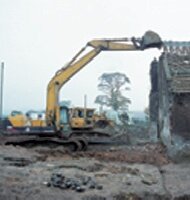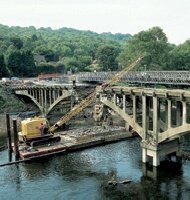Informed Conservation publication


Informed Conservation is about the contribution that understanding can make to the practical process of conserving historic buildings and their landscapes. Conservation involves managing change, and in order to manage change, it is vital to understand what matters and why.
Who are the guidelines for?
Anyone who provides conservation advice – archaeologists, architects, architectural historians, craft builders, conservation officers, conservators, engineers, landscape architects, planners, surveyors. It is hoped that that those who own or manage such sites will also find them of interest.
What is meant by ‘understanding’?
Understanding a building or landscape means ‘reading’ the fabric in order to analyse its construction, alteration and use through time, and then placing it in a wider context in order to assess its significance. This is a multi- disciplinary which makes use of historical research, architectural and landscape history, measured survey and the archaeological analysis of fabric. The analysis may incorporate the results of specialist techniques such as:
- Dendrochronology
- Technical Research
- Architectural paint research
- Tree survey and ecology
- Archaeological evaluation
- Analysis of views and setting
- Remote sensing and keyhole investigation
- as well as stakeholder participation and understanding community values.
The guidelines are designed to help with each of these subjects.
Not every project or case needs all of this.
Conservation advisers should have, as part of their training and experience, a broad knowledge of historic buildings and landscapes. This should be sufficient to deal with the majority of day to day decisions.
However, on those occasions where they do not have enough information to make a soundly-based decision, and they are concerned about the potential impact of a proposal on the special interest of a site, further work may be needed before a decision can be taken.
Information should be tailored to the needs of the project. Not every project needs a fully detailed analysis. Sometimes a rapid overview of a site will be enough: in other cases a good set of measured survey drawings are sufficient; a major project might benefit from a conservation plan or statement. Informed Conservation sets out the impact assessment process, and also defines ‘stages’ which can be used to match understanding to a particular project.
Timing may be critical. Wherever possible, information should be available before key decisions have to be taken, and not afterwards. Making a record of a building which is to be demolished is not a substitute for having appropriate information before the decision is taken.
When it is needed
Appropriate repair techniques depend upon understanding, whilst management may benefit from a conservation plan or statement.
Understanding is relevant to statutory casework, where advice from conservation officers or advisers should be based on an assessment of the impact of a proposal on the special interest of the site. For example, paragraph 3.4 of Planning Policy Guidance: Planning and the Historic Environment (PPG 15) notes that applicants for listed building consent should provide local authorities with full information, to enable them to assess the likely impact of their proposals on the special architectural or historic interest of the building and on its setting.
Proper understanding of the significance of a building and its landscape is fundamental to transparency and accountability in conservation advice.
What is CoBRA?
Because here is no single word or academic discipline which describes the special skill of analysing a building and landscape for conservation purposes, the term Conservation-based Research and Analysis (CoBRA) has been used to refer to:
The research, analysis, survey and investigation needed to understand the significance of a building and its landscape and thus inform decisions about repair, alteration, use and management.
The beginning of a debate
Informed Conservation will not create a new burden on either owners or conservation advisers. It simply restates the importance of understanding as part of handing on what we value to future generations. We hope it will stimulate analysts to work more closely together, advisers to make better use of such skills. In the long run, it will lead to better public understanding of why places matter.
Copies of Informed Conservation may be ordered via the website www.english-heritage.org.uk
What's New?
-
The National Heritage List for England is now live on the English Heritage website.
-
Welcome to the HER21 page. This page offers access to the full suite of HER21 project reports.
